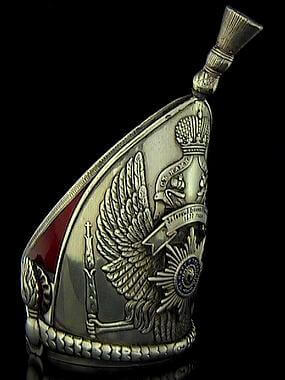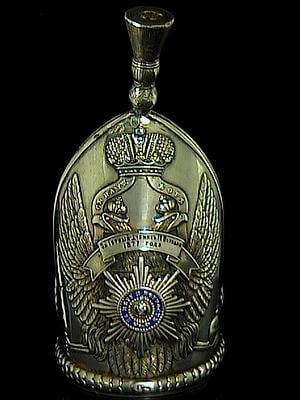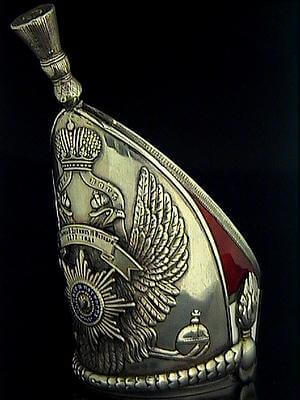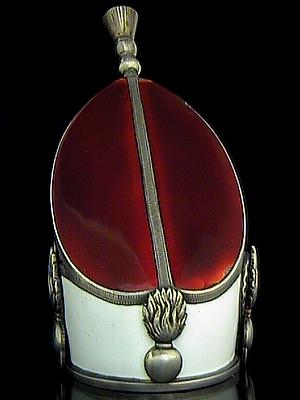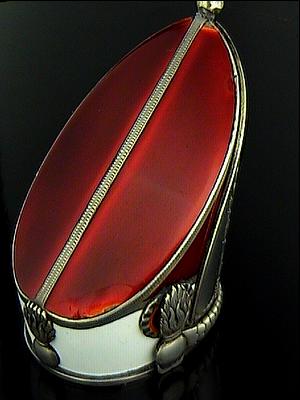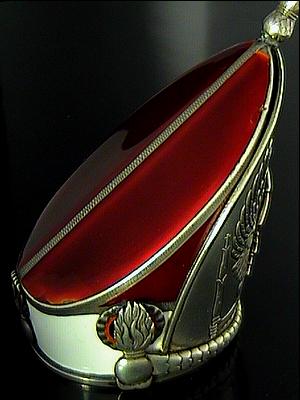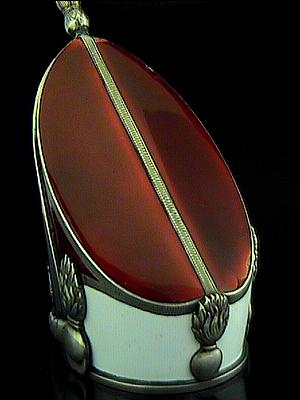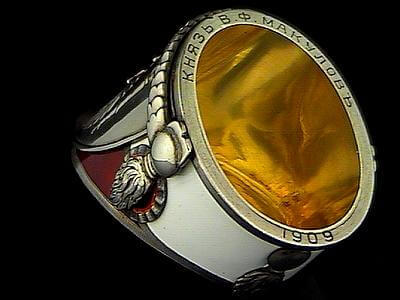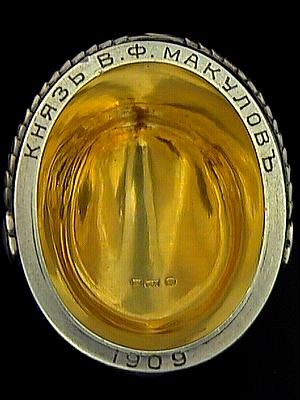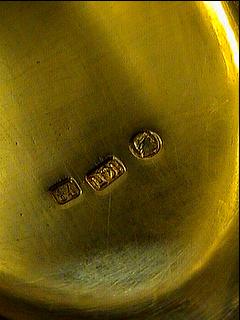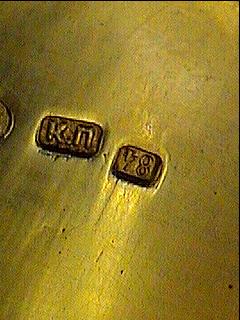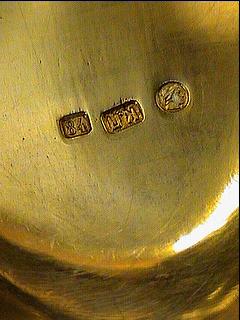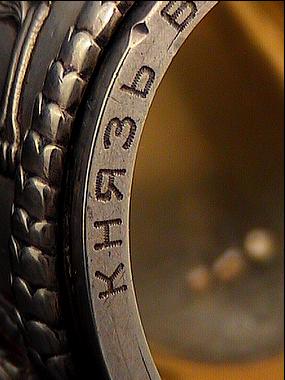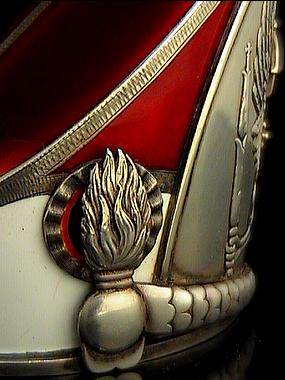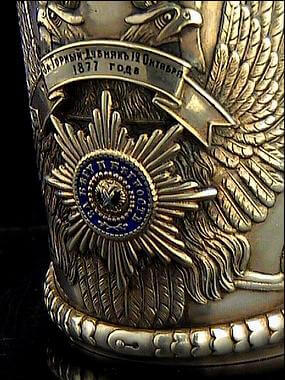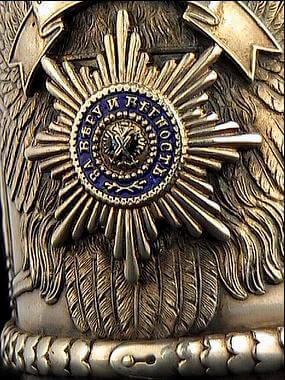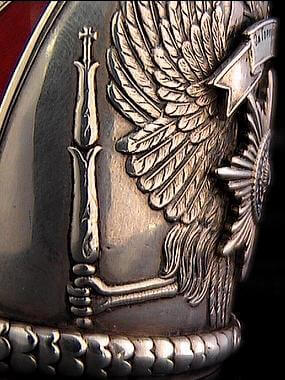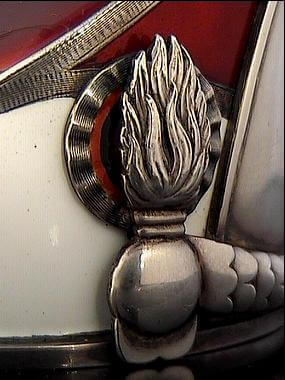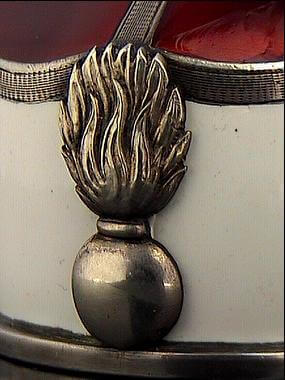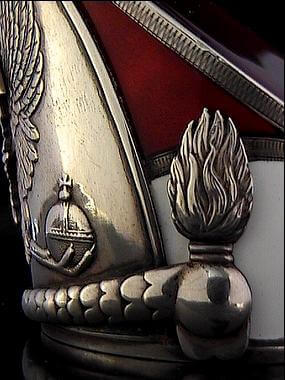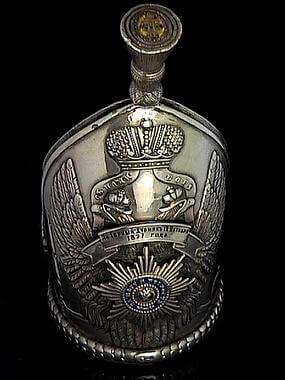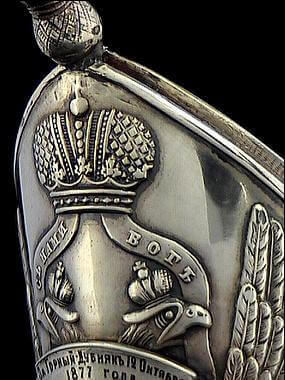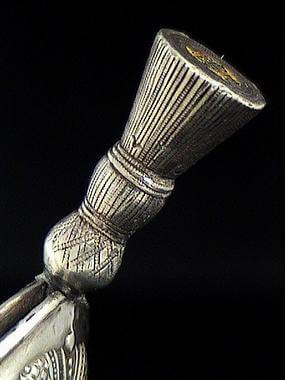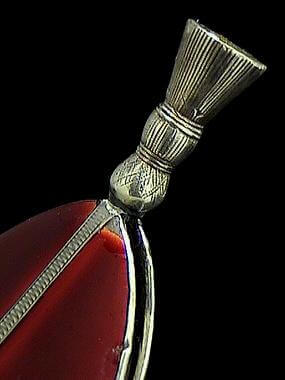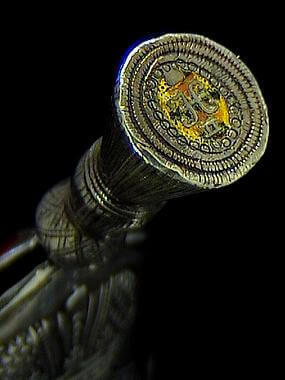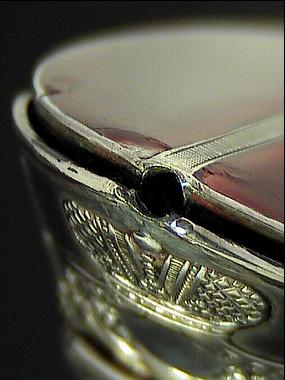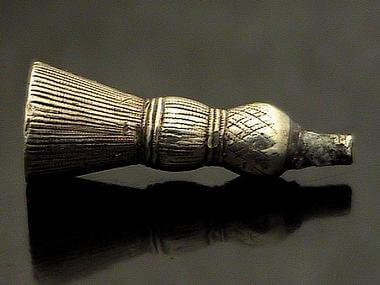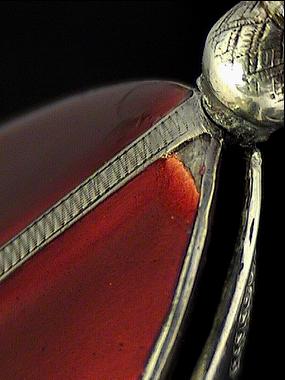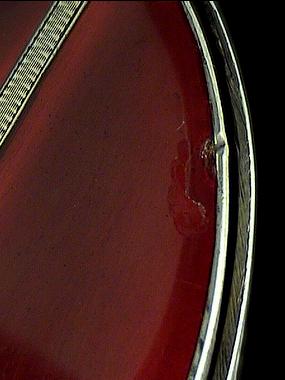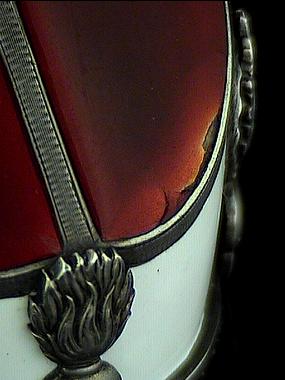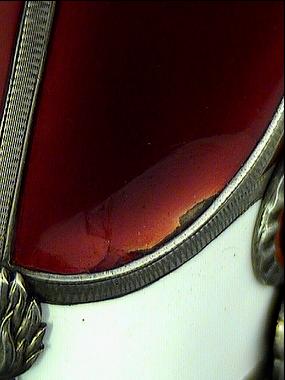VERY FINE AND EXTREMELY RARE
Silver and enamel charka (vodka cup) in the form of a parade shako (head-gear) of the Pavlovsky Infantry Regiment of the Imperial Guard, made in St. Petersburg in 1908 or 1909 by the firm ‘Eduard Kortman’.
Height 8,8 cm (3 1/2 in.)
Weight 226 g (8 oz)
Superbly modeled and finely crafted piece of very heavy weight for its size. The miniature shako is an exact replica of those worn by the Pavlovsky regiment.
Over the last 35 years such charkas of the Pavlovsky regiment seldom appeared on the market:
An identical charka, but with a missing plume, was sold at Sotheby Parke Bernet sale in New York city on May 16-18, 1974. That charka, although of the same size and quality, was made by workmaster with initials ‘M.C’. It also had engraved owner’s name on rim (lot 453).
Another similar charka, but by Faberge, was sold at Sotheby Parke Bernet in New York, on March 5-6, 1981 (lot 150). That charka also had a missing plume.
Obviously such charkas were commissioned by officers of the regiment from various St. Petersburg jewelers.
An identical charka (also by Kortman with workmaster’s initials ‘KP’) from the collection of Hillwood museum (Washington, D.C.) is illustrated in “The Arts of Karl Faberge and His Contemporaries” by Marvin C. Ross, 1965, page 187. The museum charka as well as the above mentioned two pieces, is also lacking the plume.
The Pavlovsky regiment (Emperor Paul I Regiment), is the only regiment in the Russian army which kept its 18th century head-gear till the fall of the Empire in 1917.
The shape is typical for 18th century grenadier shakos (also known as mitre caps).
The front silver plate is finely chased and engraved with double headed Russian imperial eagle and applied with the Star of St. Andrew First Called (which indicates that the regiment belongs to the Imperial Guards), and an award ribbon for the 1877 campaign.
Czar Nicholas II wearing the shako of the Pavlovsky Regiment. He was Colonel-in-Chief of the regiment.
The back is covered with translucent red and opaque white enamels in colors of the fabric of the original shako.
The charka is designed in such way so it could not stand when filled, the vodka had to be drunk before putting the cup down.
The rim is engraved with the name of the original owner and date:
“PRINCE V.F. MAKULOV 1909”
Valerii Fedorovich Makulov served in the Pavlovsky regiment and died in World War I on August 29, 1915.
Struck with 84 zolotnik standard (875 silver), St. Petersburg assay mark 1908-1917, and master’s initials Cyrillic ‘K.P.’ for Constantin Prokofiev owner of “E. KORTMAN”, a prominent goldsmith firm which specialized in military related jewelry and objects.
The ribbon is inscribed: “For the Mountain Oak Grove Battle October 12, 1877.”
(Russo-Turkish war 1877-78 on the Balkans)
The Pavlovsky Life-Guard regiment participated in the wars with France (1799, 1805, 1806-07, 1812-14), Turkey (1828-29 and 1877-78), the suppression of the Polish Uprising in 1830-31, and in WW I of 1914-18.
Applied with three flaming grenades and a round orange-black cockade in the colors of the Order of St. George.
The laces are finely engraved to imitate stitches.
The ribbons beneath the Imperial crown are inscribed : “GOD with US.”
The plume is decorated with a cockade bearing the cipher of Nicholas II.
Condition
Light overall wear.
Two small chips to red enamel at the tip of the cap.
A small surface chip to red enamel on rim.
A chiped area in the lower part on the rim.
The white enamel is intact.
The charka is in its original condition with no repairs.

